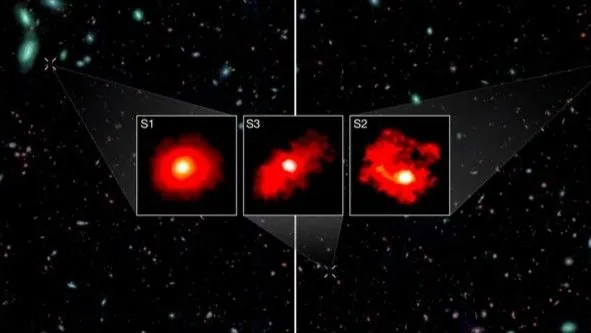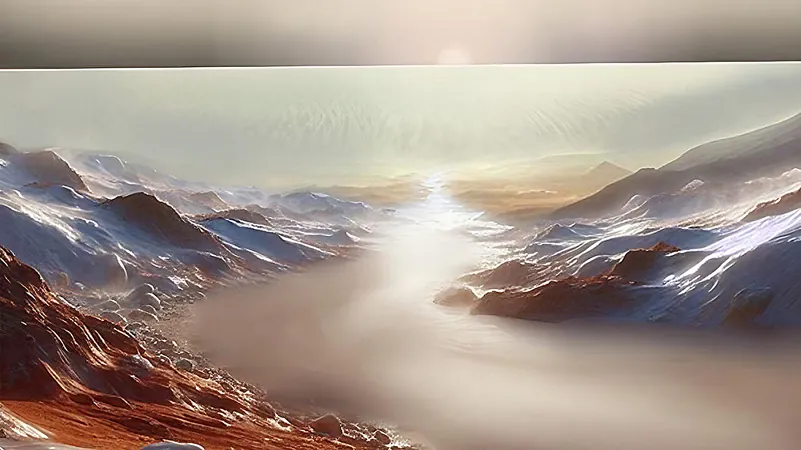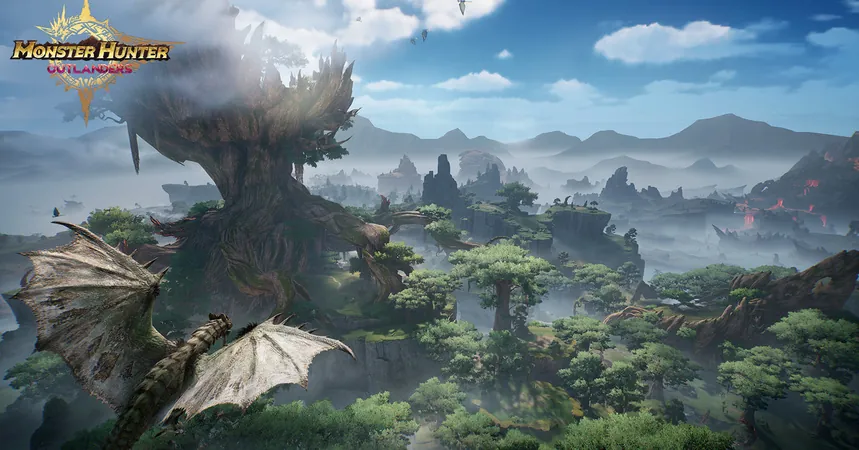
James Webb Space Telescope Unveils Shocking 'Red Monster' Galaxies that Defy Cosmic Expectations!
2024-11-14
Author: Emma
In a groundbreaking discovery, the James Webb Space Telescope (JWST) has identified a trio of colossal "red monster" galaxies dating back more than 12.8 billion years, shortly after the Big Bang. These massive galaxies, each boasting a staggering mass of 100 billion times that of our Sun, could fundamentally alter our understanding of the universe's early formation.
These gigantic cosmic entities are raising eyebrows among astronomers, particularly as they seem to form stars at an astonishing rate—far quicker than traditional models predict. The research team, which published its findings in the esteemed journal *Nature* on November 13, suggests that these red monsters challenge existing theories regarding galaxy formation.
Stijn Wuyts, a professor of astronomy at the University of Bath and co-author of the study, expressed intrigue over the implications of these findings: "Finding three such massive beasts presents an exciting dilemma. Existing galaxy evolution processes imply that gas should convert to stars at a much slower rate, yet these red monsters seem to have circumvented these bottlenecks."
Typically, astronomers believe that galaxies develop within enormous halos of dark matter, which draw in gas and dust via strong gravitational forces. This process, however, is generally inefficient, converting only about 20% of the inflowing gas into stars. The discovery of these red monsters, with as much as 80% of their gas transforming into brilliant young stars, significantly disrupts this long-held notion.
Mengyuan Xiao, lead author of the study and researcher at the University of Geneva, stated, "Our findings suggest that galaxies in the early universe could form stars with surprising efficiency. As we continue to study these celestial giants, they may provide crucial insights into the conditions that shaped the universe's earliest epochs. The red monsters mark the beginning of a new era in our exploration of the cosmos."
These red monsters earned their nickname due to their distinctive glowing appearance, observed through JWST's Near Infrared Camera (NIRCam), which allows scientists to examine light from distant galaxies by breaking it apart into its component colors. This infrared technology enables the JWST to see deeper and through the dust that often obscures other telescopes' views of the early universe.
The research team plans to conduct further observations of these red galaxies using both JWST and the Atacama Large Millimeter Array (ALMA) telescope in Chile. The discovery poses significant questions for astrophysicists, especially regarding how early galaxies evolved, as they may need to incorporate unique processes that facilitated such rapid star formation in these enormous galaxies.
As Wuyts noted, "Even in its first few years, JWST has thrown unexpected surprises our way. It has revealed that some galaxies can mature quickly during the initial chapters of cosmic history, indicating we have much more to learn about the universe's origins."
Stay tuned as the JWST continues its mission, potentially rewriting the textbooks on galaxy formation and offering glimpses into the universe's fascinating infancy!









 Brasil (PT)
Brasil (PT)
 Canada (EN)
Canada (EN)
 Chile (ES)
Chile (ES)
 España (ES)
España (ES)
 France (FR)
France (FR)
 Hong Kong (EN)
Hong Kong (EN)
 Italia (IT)
Italia (IT)
 日本 (JA)
日本 (JA)
 Magyarország (HU)
Magyarország (HU)
 Norge (NO)
Norge (NO)
 Polska (PL)
Polska (PL)
 Schweiz (DE)
Schweiz (DE)
 Singapore (EN)
Singapore (EN)
 Sverige (SV)
Sverige (SV)
 Suomi (FI)
Suomi (FI)
 Türkiye (TR)
Türkiye (TR)